NPs Basic Information
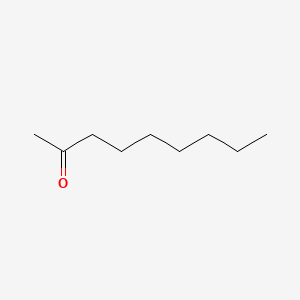
|
Name |
2-Nonanone
|
| Molecular Formula | C9H18O | |
| IUPAC Name* |
nonan-2-one
|
|
| SMILES |
CCCCCCCC(=O)C
|
|
| InChI |
InChI=1S/C9H18O/c1-3-4-5-6-7-8-9(2)10/h3-8H2,1-2H3
|
|
| InChIKey |
VKCYHJWLYTUGCC-UHFFFAOYSA-N
|
|
| Synonyms |
2-NONANONE; Nonan-2-one; 821-55-6; Heptyl methyl ketone; Methyl heptyl ketone; beta-Nonanone; Ketone, heptyl methyl; METHYL N-HEPTYL KETONE; FEMA No. 2785; .beta.-Nonanone; NSC 14760; n-C7H15COCH3; ZE5K73YN2Z; CHEBI:77927; NSC-14760; Methyl heptyl ketone; Methyl n-heptyl ketone; NSC 14760; 2-Nonanone (natural); Nonanone; EINECS 212-480-0; UNII-ZE5K73YN2Z; BRN 1743645; Heptylmethylketone; methylheptyl ketone; MFCD00009553; NONANONE-2; DSSTox_CID_2125; 2-NONANONE [FCC]; 2-Nonanone, >=99%; 2-NONANONE [FHFI]; DSSTox_GSID_22125; SCHEMBL103970; SCHEMBL626185; SCHEMBL4089642; WLN: 7V1; 2-Nonanone, analytical standard; CHEMBL2228473; DTXSID2022125; NSC14760; ZINC1653216; Tox21_303845; BBL011435; LMFA12000052; STL146543; 2-Nonanone, >=99%, FCC, FG; AKOS005720803; NCGC00357115-01; AS-10570; CAS-821-55-6; 2-Nonanone, natural, >=97%, FCC, FG; FT-0658401; N0293; EN300-19772; A840259; Q15726063
|
|
| CAS | 821-55-6 | |
| PubChem CID | 13187 | |
| ChEMBL ID | CHEMBL2228473 |
*Note: the IUPAC Name was collected from PubChem.
Chemical Classification: |
|
|
|---|
——————————————————————————————————————————
NPs Species Source
| Endophyte ID | Endophyte Name | Family | Genus | Taxonomy ID | GenBank ID | Closest GenBank ID | Reference | |
|---|---|---|---|---|---|---|---|---|
| Endophyte ID | Endophyte Name | Family | Genus | Taxonomy ID | GenBank ID | Closest GenBank ID | Reference |
NPs Biological Activity
| Bioactivity Name | Target ID | Target Name | Target Type | Target Organism | Target Organism ID | Potency of Bioactivity | Activity Type | Value | Unit | Endophyte ID | Endophyte Name | |
|---|---|---|---|---|---|---|---|---|---|---|---|---|
| Bioactivity Name | Target ID | Target Name | Target Type | Target Organism | Target Organism ID | Potency of Bioactivity | Activity Type | Value | Unit | Endophyte ID | Endophyte Name |
NPs Physi-Chem Properties
| Molecular Weight: | 142.24 | ALogp: | 3.1 |
| HBD: | 0 | HBA: | 1 |
| Rotatable Bonds: | 6 | Lipinski's rule of five: | Accepted |
| Polar Surface Area: | 17.1 | Aromatic Rings: | 0 |
| Heavy Atoms: | 10 | QED Weighted: | 0.516 |
——————————————————————————————————————————
NPs ADMET Properties*
ADMET: Absorption
| Caco-2 Permeability: | -4.413 | MDCK Permeability: | 0.00001930 |
| Pgp-inhibitor: | 0.027 | Pgp-substrate: | 0.003 |
| Human Intestinal Absorption (HIA): | 0.005 | 20% Bioavailability (F20%): | 0.98 |
| 30% Bioavailability (F30%): | 0.984 |
——————————————————————————————————————————
ADMET: Distribution
| Blood-Brain-Barrier Penetration (BBB): | 0.997 | Plasma Protein Binding (PPB): | 88.15% |
| Volume Distribution (VD): | 0.773 | Fu: | 16.04% |
——————————————————————————————————————————
ADMET: Metabolism
| CYP1A2-inhibitor: | 0.892 | CYP1A2-substrate: | 0.864 |
| CYP2C19-inhibitor: | 0.436 | CYP2C19-substrate: | 0.719 |
| CYP2C9-inhibitor: | 0.272 | CYP2C9-substrate: | 0.921 |
| CYP2D6-inhibitor: | 0.016 | CYP2D6-substrate: | 0.514 |
| CYP3A4-inhibitor: | 0.032 | CYP3A4-substrate: | 0.134 |
——————————————————————————————————————————
ADMET: Excretion
| Clearance (CL): | 6.996 | Half-life (T1/2): | 0.748 |
——————————————————————————————————————————
ADMET: Toxicity
| hERG Blockers: | 0.066 | Human Hepatotoxicity (H-HT): | 0.024 |
| Drug-inuced Liver Injury (DILI): | 0.096 | AMES Toxicity: | 0.006 |
| Rat Oral Acute Toxicity: | 0.04 | Maximum Recommended Daily Dose: | 0.033 |
| Skin Sensitization: | 0.542 | Carcinogencity: | 0.111 |
| Eye Corrosion: | 0.986 | Eye Irritation: | 0.974 |
| Respiratory Toxicity: | 0.124 |
——————————————————————————————————————————
*Note: the ADMET properties was calculated by ADMETlab 2.0. Reference: PMID: 33893803.
Similar Compounds*
Compounds similar to EMNPD with top10 similarity:
| Similar NPs | Similar Drugs | ||||||
|---|---|---|---|---|---|---|---|
| NPs ID | NPs 2D Structure | Similarity Score | TTD ID | Drug 2D Structure | Similarity Score | ||
| ENC000451 | 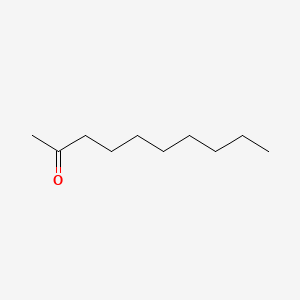 |
0.900 | D0AY9Q |  |
0.380 | ||
| ENC000254 |  |
0.889 | D0FD0H | 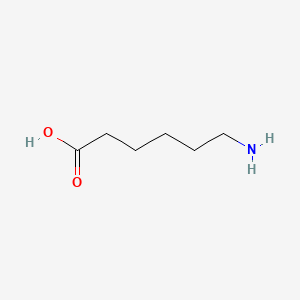 |
0.378 | ||
| ENC000265 |  |
0.818 | D0E4WR | 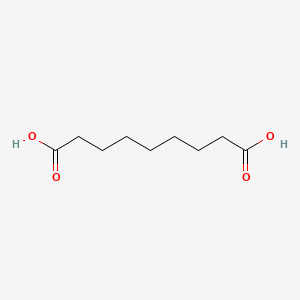 |
0.378 | ||
| ENC000250 |  |
0.778 | D0Z5BC | 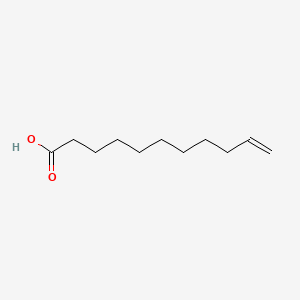 |
0.370 | ||
| ENC000556 |  |
0.750 | D0XN8C |  |
0.344 | ||
| ENC000399 | 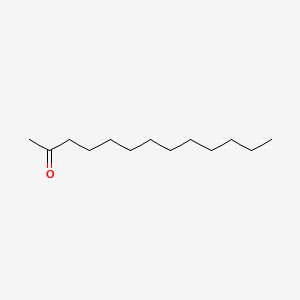 |
0.692 | D03ZJE | 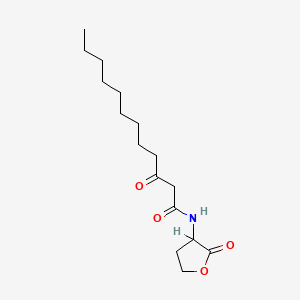 |
0.344 | ||
| ENC000030 | 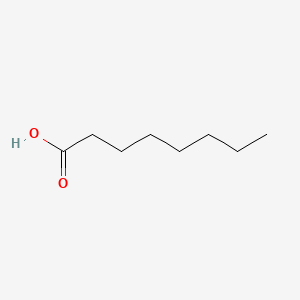 |
0.688 | D07ILQ | 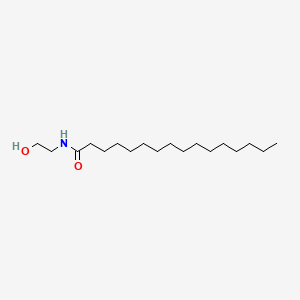 |
0.338 | ||
| ENC000687 | 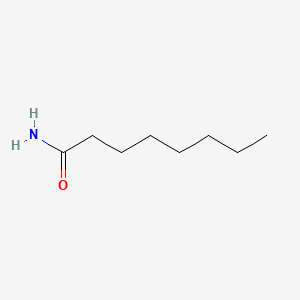 |
0.688 | D01QLH | 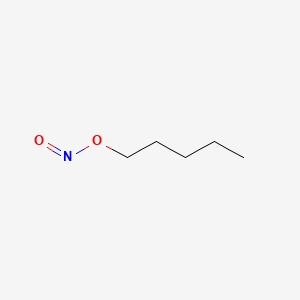 |
0.324 | ||
| ENC000253 | 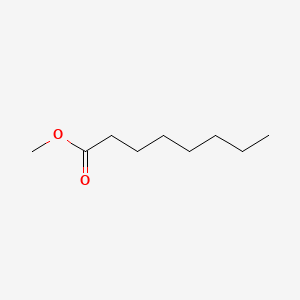 |
0.676 | D0O1TC | 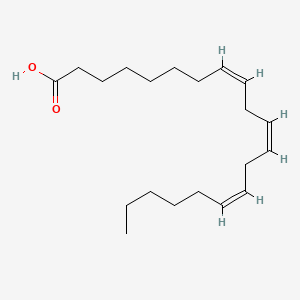 |
0.324 | ||
| ENC000263 | 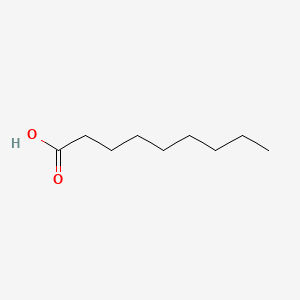 |
0.629 | D05ATI |  |
0.321 | ||